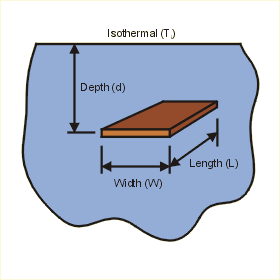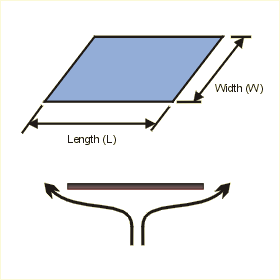About the Thermal Wizard
The Thermal Wizard is developed and maintained by Maya HTT. We hope you find it is a useful tool to help you understand common heat transfer problems and thermal phenomena. If you do find any problems, then please report them via our Feedback Form and we will investigate. Maya HTT will make changes, additions and deletions to the web site from time to time without any notification to users of The Thermal Wizard.
Disclaimer
This Disclaimer applies to any application, software code, algorithm, form, documentation and any other component of the THERMAL WIZARD (collectively the “Thermal Wizard”) that is made available to you from time to time by Maya Heat Transfer Technologies Ltd. (“MAYA HTT”). The Thermal Wizard is provided for your personal use and any commercial, industrial or other type of use is strictly prohibited. MAYA HTT is providing you with the Thermal Wizard free of charge, but to the maximum extent permitted by applicable laws, MAYA HTT FULLY DISCLAIMS AND ASSUMES NO LIABILITY WHATSOEVER, UNDER ANY THEORY OF LAW, FOR ANY TYPE OF DAMAGE OF ANY KIND THAT YOU MAY SUFFER ARISING OF THE USE (OR INABILITY TO USE) THE THERMAL WIZARD, WHETHER DIRECT OR INDIRECT. YOU ARE USING THE THERMAL WIZARD AT YOUR OWN RISKS AND IT IS PROVIDED TO YOU "AS IS" WITHOUT WARRANTY OF ANY KIND, EITHER EXPRESSED OR IMPLIED, INCLUDING, BUT NOT LIMITED TO, THE IMPLIED WARRANTIES OF MERCHANTABILITY, FITNESS FOR A PARTICULAR PURPOSE, OR NON-INFRINGEMENT. Without limiting the generality of the foregoing, you are hereby advised that the Thermal Wizard may be unavailable from time to time, may include technical inaccuracies, be incomplete or contain bugs, errors, viruses or similar codes with detrimental effects. You agree that this Disclaimer and your use of the Thermal Wizard are governed by the laws in force in the Province of Quebec, Canada, and you agree to the exclusive jurisdiction of the courts located in the judicial district of Montreal to adjudicate any dispute arising out of this Disclaimer or your use (or inability to use) the Thermal Wizard.
Should any user of the Thermal Wizard provide MAYA HTT with information including feedback data, questions, comments, suggestions or the like regarding the Thermal Wizard, such information shall be deemed to be non-confidential and MAYA HTT shall have no obligation of any kind with respect to such information and shall be free to reproduce, use, disclose and distribute the information to others without limitation. Further, MAYA HTT shall be free to use such information (and any ideas, concepts, know-how or techniques contained in such information) for any purpose whatsoever including, but not limited to developing, manufacturing and marketing products incorporating such information.
Copyright 2020 Maya Heat Transfer Technologies Ltd or its affiliates. All rights reserved. No license is granted other than the personal right to use mentioned above.




























